| Revista Umělec 1999/2 >> Esthetics of Interference: From Anthropocentrism to Polycentrism (Reflection of Digital Media) | Lista de todas las ediciones | ||||||||||||
|
|||||||||||||
Esthetics of Interference: From Anthropocentrism to Polycentrism (Reflection of Digital Media)Revista Umělec 1999/201.02.1999 Tomáš Lahoda | media | en cs |
|||||||||||||
|
"At the end of last year’s November, the Norwegian city of Bergen witnessed an international conference on digital art and culture. This article will focus in two parts on aspects of digital art, transition from anthropocentrism to polycentrism and esthetics of interference as described by Lars Qvortrup, intermedia professor at the Aalborg University, and reflected by experimental Danish performance group Hotel Pro Forma. Since 1985 the group’s performances have been concerned with articulation of an artificial space in polycontextual world, dealing with subject-subject relations in regards to technology and arts and concept of interference of various media.
The basic prerequisite consists in a thesis stating that digital art should be perceived as a way of communication under new social conditions with the use of new tools for observation rather than the result of new digital technology. We are currently experiencing social changes consisting in transition from modern society to emerging hypercomplex society. We are also witnesses of esthetic transition from anthropocentric art forms of modern society to polycentric art forms of hypercomplex society as a reflection of the social changes. Digital, interactive technology provides means for registration and communication which are particularly suitable for articulation of the above stated changes. In the light of the current post-normative conditions, esthetics is the result of interference between complex systems rather than realization of normative categories of “beauty“. We are upon journey to society that is essentially different from so-called modern society. It was described as “functionally differentiated“ (Luhman 1997), “polycontextual“ (Günther 1979) and “hypercomplex“ (Qvortrup 1998). It is based on the fact that it does not offer one single viewpoint but many mutually competing viewpoints, each having its own social context. This does not lead to creating new art forms, it causes the need to look at the world in a different way. This also represents a challenge for arts. However, one may say that the gradual transition from anthropocentrism of modern society to polycentrism of our current society has been reflected by new art forms since the beginning of this century. Digital art thus articulates the hypercomplex situation in a particularly adequate manner. Digital art is not a product of technology; this new digital medium provides us with tools for artistic observation of society. It should then be analyzed in an art-historical and esthetic context. The digital information and communication medium is a kind of an artificial eye and ear, sort of extension of our sensual abilities. Interactive digital media may focus on phenomena that used to be invisible before. The eye’s function does not consist in - as Gregory Bateson said - letting the world to enter our minds but leaving it outside. Similarly, the function of sense is not to take in everything but to make selection. We can see ourselves sorting information, reducing the complex to the simple, focusing on one thing rather than the other. In a society typical for many competing viewpoints, esthetics cannot be defined by the normative ideas, transcendental category of „beauty“. On the contrary, esthetics becomes result of interferences between various viewpoints and social systems represented by them. Communicative articulation of polycentric society is thus fully developed in digital art with its germ phase represented by cubism and abstract art forms. Anthropocentric art forms The anthropocentric - or „modern“ - society originates in Italian Renaissance era. It is based on the idea of a human subject as an universal transcendental principle. Consecutively, the man also constituted features and character of the universal observational and communicational order. (Kant) Art has created an ideal of linear perspective which represents the perspective in which a human subject is the center of observation. Linearity also becomes the control principle of the narrative. “Beauty“ is a category of the transcendental subject which may be reconstructed in art. Leonardo’s drawing Human figure in a circle illustrating proportions (1485-90, Academy, Venice) may serve as an instructive example of such anthropological artistic expression of the idea. The drawing tells us that even such basic forms as a circle or a square come from nothing, not even an external principle. They are defined by ideal proportions of a human body. Originality becomes a pivotal issue as it expresses a status of divine artist offering his/her own observations to passive audience. Similar is the man’s relations to technology. A man is a potential ruler of the universe and technology is considered a passive tool of the all-mighty man. In general, human individual is the center of the world in modern - anthropocentric - art while the surroundings are viewed through central perspective; esthetic norms (beauty) in art are defined through the human subject’s judgement. Gradually, however, belief in transcendental subject is undermined and degraded. Crisis of anthropocentric forms The beginning of the 20th Century saw development of a new idea which stated that the world is so complex it cannot be represented by one single principle, be it God or a human being. Example of this may be seen in the impressionist revolution of the established society at the end of the 19th Century. In fact impressionist painters did nothing but took the anthropocentric principle seriously and in contrast to Kant’s esthetic theory initiated a conflict between individual viewpoint and the universal principle. My eyes see differently from yours. In general, an impressionist painting refers to the fact that the world does not exist “an sich“ (on its own) but it appears only when being observed through certain temper. The world is always a world through certain experiences and the only way we can say something about it is by declaring our own individual impressions. In parallel to the impressionists’ achievement, a similar debate flared up among philosophers lead by Edmund Husserl’s phenomenology which is based on a claim that a phenomenon is the result of object’s meeting with consciousness. The impressionist painting does not communicate an external object, on the contrary it conveys its own observation of the external object. The audience does not see Monet’s water-lilies but Monet’s vision of water-lilies. In this sense, impressionism does not mean the end of art era but a beginning of a new era which focuses on self-reflection as the main theme for art. Polycentric art forms An example of reflection and basic articulation of polycentrism may be seen in Picasso’s and cubists’ achievements as they applied a number of viewpoints in one painting. This element has been made conventional in the basic Apple Macintosh computer icon (the OS system icon) showing a human face seen from two different angles at the same time. Another of polycentric society’s elements includes reality as a common result of those who co mmunicate. Art has experimented with this phenomenon in various phases of its development during the 20th Century by including the viewer’s active participation in art works. Marcel Duchamp explored esoteric language of art through his ready-mades, everyday-life objects elevated to art objects which give evidence that art is not created by a romantic genius but by de-contextualizing, i.e. pulling things out of their usual context and placing them into the context of artistic observation. The work is finished by viewer’s participation and is thus created by everybody. In contrast, modern tradition recognizes one single universal subject carrying out logical operations. In polycentric society, we must also consider the fact that subjectivity is ontologically spread among a number of pluralist centers - subjects. (Günther, 1979) Niklas Luhmann’s generalization states that hypercomplex society is in fact a polycentric polycontextual system which uses completely different codes, classifications and frameworks depending on the fact whether description is made based on religion, science, law, politics, education, economy, etc. As a result, the idea of transcendence has to be left behind - there exists no single perspective or viewpoint which could be turned into universal constituting status. This means that observation of the world (and ourselves) cannot be fully communicated as there is no universal code through which we could come to mutual understanding. The radically altered conditions find their reflection in art. Development from the linear text (or linear perspective) towards cybertext as a tool for creating a number of different expressions and images. The ideal is not reconstruction of beauty but bridging the gap between consciousness and communication: communicate those observations which cannot be conveyed in any other way, i.e. provide access to world that is impossible to communicate. “Beauty“ is a potential result of artistic experiments of interferential structures. Cyber world is not an imitation of the world although it is a common illusion when it comes to multimedia that their special abilities consists in their imitation potential - and for that reason they are included in the traditional art program (i.e. to imitate environment). The artist’s role is changed by his resignation to originality. It is shifting from the artist as a divine, indisputable creator with public as “impotent voyeur“ towards the artist being a co-creator with the viewer as co-investor in a shared hypercomplex system. The artist’s role then consists in creating potential worlds through which the „users“ may create their own realizations of the world. The man’s relation to technology is subverted in a similar way. The ideal based on the master-slave relation is changing and technology is perceived as an independent subject in an equal stance towards a human subject in which both subjects get to know each other. Example of this: digital medium giving form to a way through which a man observes the world and technology itself. Technology is no longer mere passive instrument of the artist-creator; creative process is made up of interferences between the human subject and technology. Digital tools and artworks In the art world, computers and digital networks represent yet another tool for artistic communication. In a certain sense, they are similar to the other ones, in another sense they are radically different. Each tool used in artistic practice may be defined as a tool or instrument of observation and communication. A painter observes and communicates with the world through colors and canvas, a writer uses written word, a sculptor takes a spatula, a hammer, clay or stone, multimedia artist uses computer. The meaning of the tools does not lie in the fact that they become obedient slaves in the hands of the master but in the fact that they represent a challenge for the artist. Paintings (sculptures, etc.) are the result of contention between the artist’s observation, communication tools (materials, tools) and the artist - his/her abilities to manage the means. In what sense are computers and digital networks different from other media? What influence do interactive digital media have on artistic observation and communication potential, how are they different from traditional art? In relation to the ideal of “beauty“, traditional art reflected the role of an art object as a material object which may be classified within space and time and which is created by one author - in some cases a group of authors - for audience with references to external phenomenon and/or idea. It is a common knowledge that the aim of esthetics, along with defining concepts of “beauty“, is to create roles for manipulation with materials (sound, colors, words, etc.) to achieve a form that would best express the idea of “beauty“. Digital media is principally different from the traditional ones in several aspects. First of all, they are immaterial - an artist does not manipulate a concrete object, instead he uses a program. The result is not a definite artwork but program which is articulated in a number of (partly uncontrollable or self-generating) forms of manifestation. Due to this fact, the traditional concept of originality is abolished. Traditional art is based on the idea of articulation and presenting certain intention in a unique and unexchangeable manner. In case of digital media, it is impossible to tell the original from originals-copies which may be mutually identical or may be realized in various representations and formats. Digital media characterizes a trend from originality to self-manipulation and hetero-manipulation. Audience and specific conditions of reception may play a co-productive role here. Furthermore, digital art often resists codification in space and time such as in cases when an artwork exists in the form of a number of possibilities in cyberspace (“ergodic“ stories on the net). Digital art thus represents transgression of classic art forms. As an esthetic expression of articulation of hypercomplexity, computer art benefits from its specific dynamics, immateriality, embeddedness in time and space. This also influences the relation of the artist to the object, the artist to the audience and the relation of the audience itself to the object. It seems that new esthetics depends on dynamic relation between order and complexity. Thus “beauty“ is not a result of reduction of the complex but possibilities of interference of higher complex systems. The artist plays a certain activating role, being a kind of initiator of the co-productive process. Digital art forms and polycentrism In the following paragraphs, the use of digital artistic means use to achieve esthetic reflection of the current hypercomplex society will be illustrated by several examples. One example of articulating polycontextuality of hypercomplex may be found in multimedia musical Monkey Business Class of 1996, a co-production of the Dumb Type group of Japan, American performance artists Diller and Scofidie and the Danish group Hotel Pro Forma. The musical’s line deals with money as a reflection of interpersonal relations in the role of alternative universal code replacing traditional transcendental human subject. The theme consists in interaction of a man and technology with technology playing an important and active role. The question about identity and the status of an individual’s “self“, however, is not asked by a human being, instead the question is given by - ironically - a versateller machine. “Are you the one you are saying you are?“ the machine asks and by using so-called “biometric access controlling system“ it solves once and for all the problem of credit cards, identifying the user by a fingerprint, voice or eye scanning. The musical’s meta-theme represents differentiation of viewpoints. Polycontextuality as a frame of culture is presented by three singers on stage with each of them singing in their own native language representing three different cultural stereotypes: an American cowboy, Japanese geisha and a Danish sailor. The American musical is combined with spoken text of a medieval moralist play. Three levels of performance are played out on stage: singing is on one level, choreographed dance on the second and recited text on the third. The most important element of using various viewpoints is the combination and inosculation of live acts on stage and projected “live“ images of the same acts as recorded with cameras positioned at the side and above the stage. The images are projected on a gigantic parallel screen above the stage turning the viewer’s perspective upside down as the front and side positions is blended with horizontal and vertical positions. Diller and Scofidio took this experiment with representation even further in their Jet Leg in 1998. The performance’s main character was an English sports voyager Rodger Dearborn. His broadcasting suggests that he is on a sea-voyage around the world. In fact, he is circling somewhere at the coast of Argentina. Using a video camera and a video recorder, radio broadcasts, he gives the impression that he really is on a voyage across the world. The play’s main theme is about losing oneself in time and space and interference between a “real“ and a media generated position. Similarly to Monkey Business Class, the stage shows several representative layers. In the middle of it, there is a simple representation of a sailing-ship with a small screen behind Dearborn. The screen connected to a VCR presents his current context - quiet sound of the ocean, interior of his cabin, etc. In front of him stands a video camera recording his “situation“ which is projected on a large screen at the back of the stage combined with seemingly realistic footage from his ship. At the front of the stage is a transparent glass wall with people sitting behind it: BBC reporters, his wife, radio technicians, etc. They are also projected on the back screen. The audience is confronted with several parallel representations, viewpoints and communications channels at the same time. The “real“ and the “fictitious“ is blending, interchanged and turned around. The transition from the anthropocentric to the polycentric causes a crisis. Belief in the universal, Eurocentric culture has lost its legitimacy as did the idea of subjection of nature. Bruno Latour, a French sociologist, reflects this situation by refusing to accept traditional division of work between an active subject (a human being) on the one hand and a passive object (technology) on the other. He also refuses to accept any natural or universal social order. For him, chaos is the beginning, i.e. normal conditions, while order represents a mere exception. Universality and order is not a rule, it is an exception that has to be explained. Order is installed by what Latour calls provisory network constructions, so-called “agent networks“. A number of smaller units set provisory connection which forms certain stability through their complexity, inert immobility. “Strength does not come from concentration, purity and unity, it comes from distribution, heterogenity and carefully woven straws.“ They particularly include technical objects or artifacts, as Latour calls them. They are not passive players formed by a sovereign human being. The artifacts themselves participate as “co-players“, forming the human subject which has traditionally possessed an action monopoly. This state is not something that should be criticized as anthropocentric analysis would certainly demand. On the contrary, it is a prerequisite of creativity. This state, Latour claims, creates so-called „hybrid units“ modifying both human psychology and artificial technology. The relation of a human being vs. technology is understood and accepted as a “symmetric system of exchange“ according to Latour’s analysis. Provisory situations are created having the ability to stabilize in the form of a provisory order. At the same time, however, they may lead to new dynamic transformation processes due to the autonomy of the participating units. This state is reflected in inclusion of new information technologies into theoretical language as a co-player which plays similarly important role as the human factor in a number of Hotel Pro Forma performances. The main elements in The House of Double Axe / XX (1998) include a choir (just like in ancient Greek theater), a solo singer, a dancer, a band and artificial stage setup consisting of light, music and sounds. The performance’s central square is created with light. Using a “double-scroller“, a number of mutually inosculating images are projected on the floor, forming an effect of interferential beauty. The double-scroller is similarly important, often even more active and more expressive than the choir of pop-girls in their neon dresses with kitchen appliances in their hands, reciting some neo-dada rhymes in various languages. Beauty is not realized in the form of pre-existing universal order (beauty as transcendental principle); it is the result of interference of mutual complex systems. It is not the result of “extraction“ of complexity to a more simple system; it is the result of spontaneous interferences of higher levels of complexity blending into obviously chaotic forms. The Enigma of the Later Afternoon (1992) is also based on interference between technology and its characters. Produced in cooperation with the Japanese Dumb Type group, this performance was prepared specifically for the Copenhagen Greek and Egyptian Museum. Mobile, computer-controlled light platforms positioned on three parallel stages form seemingly aleatoric, chaotic, mobile structure of the performance. Di Chirico’s metaphysical world is cloned here with Japanese tradition and hi-tech catwalk show reminding fashion shows or Japanese sushi restaurants where small canapes are presented on small plates, endlessly circulating around the bar. All this is accompanied with pleasant, catchy “muzak“, computer manipulated Italian 70‘s pop songs. Show time! At the same time, the viewer can see a small toy train on the stage as if it just came out of De Chirico’s painting which gave the performance its name. Interference is one of the main construction principle in a number of Hotel Pro Forma performances. Music in the Operation: Orpheus opera (1993) is drawing on three different sources: John Cage’s minimalism, Renaissance inspired choir of the Danish composer Bo Holten, and Che faro sensa Euridice air of Gluck’s opera Orpheus and Euridice. The aim is not to create a postmodern atmosphere of “anything goes“ by using decontextualized citations but a new, complex image of beauty emerging from interference of various musical styles. Transition from traditional world system to hypercomplexity is also accompanied by transition from metaphysics to metabiology. In this new world order, esthetics of beauty is exchanged for esthetics of interference. One of the ways to articulate this “metabiological“ world order includes installing interference between digital media. Many of the HPF performances draw on themes of interference between digital media and the “medium of body“ in experiments with a construction of artificial space and creating equal relation (subject-subject) between technology and art. Another element inherent in HPF performances lies in experiments with representation of space. As an ironic commentary on current technological achievements when 3-D spaces are constructed and represented on two-dimensional computer screens, the Operation: Orpheus opera presents large 3-D stage setup which is transformed into evidently two-dimensional surface. Most of the HPF productions lie somewhere between theater and an exhibition converting conventional theater based on linear “mise en scéne“ story-line into live installation in which “scéne“ turns into “mise en narrative“. It has already been said that one of the hypercomplex society’s premises is the fact that we do not live in one world, we live in a world of many worlds instead. This is the theme of the Chinese Compass performance (1998) which combines Chinese and European opera with a lecture and slide projection. I live in my world, you live in yours - how not to divide the world and share it at the same time? This dream - conservative utopia, the dream of yesterday - is no longer valid. The lecture’s (essay’s) prologue begins with the following motto: “You can’t talk about sea with a frog living in a well. It only knows its own hole.“ Does this mean that each of us lives in our own world without any contact possible? It does not but any human communication begins with a border or barrier that needs to be surpassed. Each communication runs between ego and another ego, alter ego. How can such communication be realized? It is possible only by ego creating the other person as an image of itself. The performance’s text reflects this issue: “I had a dream that I was Chinese and when I woke up, I didn’t know whether I was Chinese speaking Dane or Dane dreaming in Chinese.“ The performance ends with Danish and Chinese characters exchanging their languages: the Dane speaks Chinese and the Chinese speaks Danish. The production celebrates Chinese compass, a compass that is not used to find a way to rational destination in the world but the compass is the aim itself as it shows the way out of the world and time. "
01.02.1999
Artículos recomendados
|
|||||||||||||
|
04.02.2020 10:17
Letošní 50. ročník Art Basel přilákal celkem 93 000 návštěvníků a sběratelů z 80 zemí světa. 290 prémiových galerií představilo umělecká díla od počátku 20. století až po současnost. Hlavní sektor přehlídky, tradičně v prvním patře výstavního prostoru, představil 232 předních galerií z celého světa nabízející umění nejvyšší kvality. Veletrh ukázal vzestupný trend prodeje prostřednictvím galerií jak soukromým sbírkám, tak i institucím. Kromě hlavního veletrhu stály za návštěvu i ty přidružené: Volta, Liste a Photo Basel, k tomu doprovodné programy a výstavy v místních institucích, které kvalitou daleko přesahují hranice města tj. Kunsthalle Basel, Kunstmuseum, Tinguely muzeum nebo Fondation Beyeler.
|








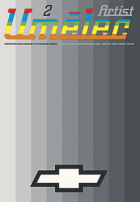















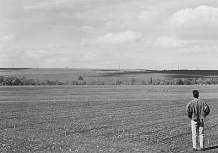




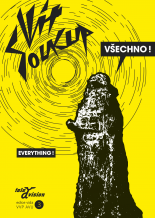
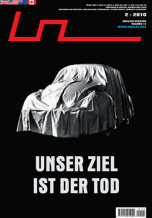
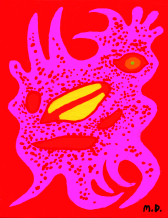
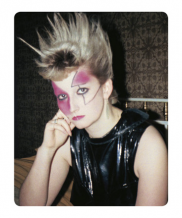


 We Are Rising National Gallery For You! Go to Kyjov by Krásná Lípa no.37.
We Are Rising National Gallery For You! Go to Kyjov by Krásná Lípa no.37.
Comentarios
Actualmente no hay comentariosAgregar nuevo comentario